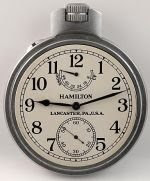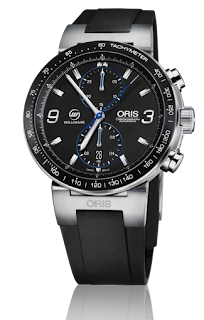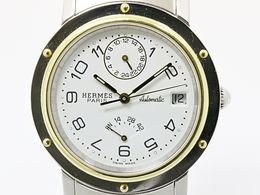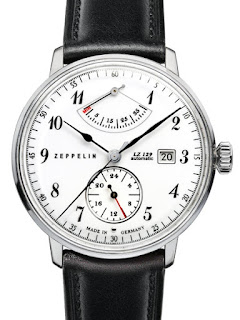Watch designs and their origin can present us with answers about our consumer environment. Why is that important? It appears that consumer deception goes unchecked in our world and luxury items, like Swiss watches, abound with false tales. It’s also the topic of which I know the most.
In present times, consumers have slightly more than “no help” from trade organizations. Luxury goods present only a sliver of the whole. In everyday life, who keeps us safe from product fraud and deception? When you notice the price of food creeping up and your regulators tell you about a zero inflation rate, it’s confusing. You can see inflation spread from just about everything from chocolate candy to heavy machinery.
In such circumstances, we can use investigative reports to keep us informed. You may not have an interest in men’s jewelry – that is, watches. In Asia, especially China, the industry provides important jobs. In the US small businesses income depends on knowing the truth. So, there you have it.
In this post, I want to look at Hamilton’s Naval Deck Chronometer watch from the 1941-42 era and the designs of Parnis , IWC and Panerai with power reserve indicators.
- Back to Hamilton’s Naval Deck Chronometer.
Aside from its importance in winning the war, it impacted an era of time management and activity coordination. Here’s an article for reference, entitled How Hamilton Watch Co. Won World War II by William George Shuster.
Evidence suggests Hamilton’s World War II Deck Chronometer has inspired many contemporary watch designs. From appearances and by tracing history, so far, the Model 22 seems the earliest watch with a large second hand at the six o’clock position and a power reserve at the 12 o’clock position. Take a look at the gallery and see what you think.
Some watchmakers have even created their own myths to explain their use of the Model 22 design. Let’s clear this up a bit.
You might find that a new matchmaking firm needed lift in their marketing. So, they sifted through registration records, discovered a defunct company and registered the name. Now, they have a claim to tradition, heritage and bloodline – and the year established. A long list of prestigious companies today did such work.
It can create instant credibility if it opens its marketing effort in say, China. The average paying customer in China, Brazil, Canada or the US would have no idea if such a company is anything but Swiss.
Pitch a 25 year-old department store buyer a convincing story about an exclusive European watch started in 1822 in the Jura mountains. See what happens. Then keep an eye on the advertising department.
It happened to American Express in 1983. They sold out the first day customers opened their catalogs.
What if a continuously operating firm makes up a story about its past and uses it for market position? I’ve seen some questionable histories that I believe came out of the brand manager’s office. Aside from suspicion, research and deductive reasoning, I can name three such companies and have the records to back up my assertions.
One of my favorite watch stories belongs to the IWC watch. I love this story. You can find it at this link. I’ll just write some fair use information below.
In 1868, Boston watchmaker Florentine Ariosto Jones founded the “International Watch Co.” in Schaffhausen, far from the watchmaking centres of French-speaking Switzerland. His plan was to bring together progressive American production techniques with the skilled craftsmanship for which Swiss watchmakers were renowned
Maybe I missed something, but I have only seen two pictures of Mr. Jones and someone flipped the original horizontally. It also looks Photoshoped. (A verb form of Photoshop in common use). The name, Florentine Ariosto Jones, sounds so incongruent, especially since he settled on the German speaking side of Switzerland.
I’ve not done too much research on the IWC, except to examine new ones, read reports, a few articles and study their website. Still, the name makes me chuckle. You’d have to be an American to understand the humor of it. The year he began his firm, also seems a little funny. The American Manufacturing System (AMS) didn’t have the moniker. In 1868, only a couple of business used the system and they belong to the firearms industry. Few knew of the system until later in the century. While referred to as the AMS, it originated in Britain.
I believe they make an excellent watch. I read articles about their use of ETA’s Valjoux and Venus movements. If so, what do they sell?
About the Designs:
Hamilton appears to have initiated the design with its Model 22 Naval deck watch. That’s the image in the top left corner of the gallery.
Hamilton released a revival model they called Khaki Navy Pilot Pioneer Automatik Chronograph. It’s on the top row of the gallery to the left. Hamilton explained their model with this product copy. Note the reference to the 1940’s.
This finely crafted classical watch was inspired by the marine chronometers produced by Hamilton in the 1940s. An up-to-the-minute H-10 movement provides today’s timepiece with 80 hours of power reserve. Flamed blue hands are indicative of the brand’s long watchmaking heritage.
I consider Hamilton a legitimate design from a product they own. As Bill Shuster wrote:
Chronometers were must-have naval equipment because precise timekeeping is essential to ship’s navigators in calculating longitude and plotting location and direction…
Hamilton’s most important achievements in World War II were its marine chronometer and chronometer watches. Indeed, its marine chronometer is considered by many horological experts to be the finest ever produced. What makes that accolade even more impressive is the fact that, until World War II, Hamilton had never made such a timepiece.
Regardless of prejudice some horologist have shown about Hamilton becoming a Swiss company, the Swatch Group, Ltd. own’s its trademarks, portfolio of watches, patents and after the SSIH purchase, management. What’s the difference between one holding company buying a wholly owned subsidiary and continuing the brand. The Hamilton brand has never stopped making watches since 1892.
Parnis
The Parnis Chronometer (top row middle) gets a pass. They make no claims, don’t have a fabricated story of tradition, heritage and bloodline. They didn’t buy a defunct Swiss company.Their prices are extremely low compared to their quality. The owner filed his trademarks properly.
I sell Parnis watches on-line as well as preowned retro Hamilton Swiss watches.
I obviously have a bias, which led me to find the design of the Hamilton Model 22 and dig into the business dealings of other watch companies.
Some other considerations: Parnis exists because western watchmakers’ taught their Asian executives how to use of low-cost Chinese labor and facilities. Simply put, Parnis draws on the same economies of scale as the Swiss, Japanese and Germans. They’re giving people high value products.
Does Parnis copy Richemont’s companies watches, especially older IWC and Panerai designs? They do to a certain extent. You can argue that the Parnis watch in the Gallery looks more like Hamilton’s Model 22 than any of the other models. The designs may look identical, but too many differences exist to refer to Parnis watches as copies. Those differences include the size, dial and style of case. Panerai offers a 47mm model with a black dial with numerals at the 12, 3, 6 and 9 o’clock positions. Parnis offers a similar look in a 44mm case with numerals in all 12 positions.
I won’t disagree about Parnis using Panerai and IWC designs. I just don’t care. I don’t pay a premium for tradition, heritage and bloodline (invented or not). Enough differences exist to satisfy me. Parnis gets a pass.
IWC, Oris, Hermes et al
I have no explanation for these watchmaker’s uses of the Hamilton designs. Perhaps, they simply copied watches other people copied and so forth. Consumers will continue to blindly buy these watches and pay premiums for advertising, celebrity endorsements, sponsorships, public relations and whatever. Consumers just don’t believe they’re paying for that hype.
Typically, Richemont’s and Swatch’s companies sell their watches in boutiques they own in upper middle-class malls; they also sell through department and jewelry stores.
Summary
I wrote this article (post) to alert you to what I believe companies use as gimmicks to enhance perceived value. I believe the vast majority of consumers will continue to select watches in department and jewelry stores because of the look and a sales person’s charm. I can only inform, the rest is up to you.
Copyright 2006-2017 | All Rights Reserved







